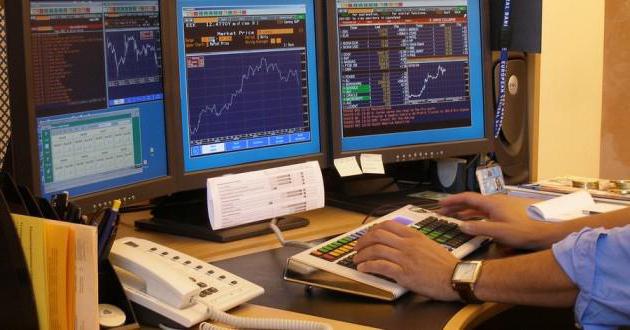The financial security of the enterprise lies in its ability, even in conditions of economic instability and without outside assistance, to support the basic development strategy. At the same time, the enterprise must successfully confront various threats and risks: both existing and potential, capable of causing damage to its activities. Such security can be achieved with financial stability and independence, coordinated work at all levels and competent protection of financial interests.
The structure of economic security of the enterprise
Modern civilization is constantly replenished not only with all kinds of benefits, but also with threats, which contributes to the growth of instability in the economic market. In these conditions, many enterprises have to develop fundamentally new ways out of difficult financial situations. Ensuring financial security is an essential part of the economic security of any enterprise. Despite the fact that the problems in this industry are relatively new, extensive scientific and practical developments are being carried out here.
The essence of the very concept of security - economic and financial, as one of its subsystems, lies in the qualitative characteristics of the system, behind which is ensuring normal working conditions, moving along the path of the developed strategy, achieving set goals, and also the ability to withstand various threats if they arise , and quickly restore previous economic positions.

Economic Security Goals
This system is designed to guarantee not only the stable functioning of the enterprise for a particular period, but also its successful development in the future. This is precisely the main goal of economic security, and the financial security of the enterprise also largely depends on it.
Functional goals:
- Guaranteed high efficiency, financial independence and sustainability of the enterprise.
- Independence in terms of technology, the development of high technical potential and excellent competitiveness indicators.
- Highly effective management, optimal management organization at all levels.
- Recruitment of qualified personnel with high intellectual potential.
- Minimal environmental impact, reduction of potential risks from carrying out industrial and economic activities.
- Complete legal stability and confidence at all levels of government.
- Information security, maintaining trade secrets in all sections of the enterprise.
- Not only improving the financial security of the enterprise, but also taking care of the safety of personnel and their property, as well as protecting the commercial interests of workers.
The financial level of economic security is considered decisive, because finance, as you know, is the “engine” of any economy, and in modern market conditions this is becoming more urgent.
Levels of economic security
Security can be achieved at several levels: international, national and private. The first includes global and regional enterprises; to the second, state-owned enterprises of public importance; to the third - private as well as households.

The economic and financial security of the enterprise directly depends on the economic security of the country.Each enterprise is a vital element for the population, providing its needs and providing the necessary resources. Increased attention to the problems of enterprise security arose due to several factors: the change of the existing economic system, the transition to a market economy, the growth of competitiveness in the market and the development of not always fair methods of competition, as well as the general weakness of the system at the state level.
The concept of economic security is focused on a competent development strategy in the face of external and internal dangers, financial uncertainty, and changes in microeconomics. In the framework of this activity, the enterprise must correctly correlate risks and profits, make the only right decisions, prevent risks and ensure the achievement of strategic goals.
The structure of economic security includes several subsystems. Among them are information, legal, personnel, market, environmental and financial. Consider the latter in more detail, in terms of its functions, significance, role and goals in the overall economic system.
What is financial security?
It is impossible to ensure stable growth and development of an enterprise without developing a competent strategy and putting it into practice. This is achieved in the modern economy by introducing an effective system, which is the financial security of the enterprise. The activity of any subject of a market economy will be successful only if the state of its finances is successful. Therefore, consideration of the problems of financial security must be attended to first.
What threatens insufficient attention to these problems? Even if the profitability of the business is relatively high, there are certain risks: for example, it would not be difficult for a more powerful competitor to absorb it. On the other hand, the higher the rate of growth and development, the more the company becomes dependent on external financing, and this threatens with a loss of independence and control in making important decisions by management.
Thus, the forefront is the assessment and analysis of the financial security of the enterprise, the identification of potential dangers, the selection and development of measures to implement financial security, as well as achieving the sustainability of the enterprise in the long term.
The key characteristics of financial security can be called a balanced activity and high quality of services, technologies and financial instruments. This also includes the ability to withstand threats and guarantee the stability of financial interests.

Characteristics of the financial security of the enterprise
- The main element of the economic security of any enterprise is financial security.
- Its main elements are quantitative and qualitative indicators.
- Each indicator has a limited value, which reflects the degree of financial security. If you go beyond these values, the financial stability of the enterprise will be in jeopardy.
- The main goal pursued by the financial security system of the enterprise is its successful development and stability. From the outside, this can be seen in such signs as an increase in market value and financial equilibrium, including in the long term.
- Finally, financial security is guaranteed to protect the interests of the enterprise financially.
The objectives of the financial security of the enterprise
According to the classification of analysts, the following tasks are distinguished in this industry:
- Ensuring stability of development and stability of cash flow.
- Confronting crises and negative economic situations.
- The ability to neutralize the actions of competitors.
- Neutralization of conflicts in the field of distribution of finance.
- Using as many sources of financing as possible.
Provided that all these problems are solved, the successful functioning of the entire financial system of the enterprise is ensured.

Safety indicators, their features and functions
Depending on the purpose and role, the following indicators of financial security of the enterprise are distinguished:
- Solvency. This includes how the company is provided with funds, how quickly it can restore solvency in the event of loss of financial control, how autonomously it can function in the most unfavorable outcome, how flexible it can manage its capital, and other financial issues.
- Financial stability. This group includes indicators of own funds and loans, the share of borrowed funds in total capital, as well as the coefficient of independence in the financial market.
- Business activity. The total turnover of funds, its speed and stability.
- Profitability. This includes property indicators, accumulation of production assets, financial investments: both short-term and long-term, as well as the net profit ratio.
Objects and subjects of financial security
The financial component of the economic security of the enterprise is closely related to the object and subject of its system. The first represents a stable financial situation at the current moment and in the future. For example, specific objects are own and borrowed funds, as well as other attracted financial resources. The subject is more difficult to determine, since there are specific environmental conditions. The subjects that govern the financial security of the enterprise can be internal and external.
- External actors. This group includes the authorities: at the legislative, executive and judicial levels. Their task is to ensure the financial security of all participants in entrepreneurial activity. On the other hand, the activities of these bodies cannot be controlled by the entrepreneur himself.
- Internal subjects. These include security personnel or persons invited to this position from specialized firms, as well as other employees who are responsible for protecting the financial security of a particular business entity.
Enterprise financial security strategies
What is the essence of the strategy? To ensure the proper level of financial security of the enterprise, it is necessary to act in stages. First, potential risks and threats that the company may encounter in the course of its activities are identified. Then, the criteria that financial security must meet are determined. After that, experts calculate the optimal monitoring system, which will be easy to track the entire process of work. Measures are being developed through which it will be possible to ensure financial security at the highest level. At the end of these activities, they are analyzed, evaluated, and, if necessary, appropriate adjustments are made.

Financial Security: What Can It Threaten?
Mentioning threats to the financial security of the enterprise, it would be useful to give them a description. After all, the main task of financial security is to successfully resist them. And its level depends on the speed with which management will avoid or neutralize these threats. Often, the ability to avoid maximum damage is to identify them as early as possible.
Threats are divided, depending on the sources of occurrence, into external and internal. An example of external threats is the purchase by competitors of stocks or debts, significant financial debt, instability of the state economy and other situations.Internal include employee errors and financial management guidance.
There are also more detailed classification of threats, as well as ways to identify and neutralize them:
- Loss of liquidity (tracking criteria - liquidity ratio at each stage of the enterprise).
- Loss of financial independence (tracking criterion - autonomy coefficient, with mandatory monitoring of leverage).
- Decrease in work efficiency, loss of development ability and drop in income (the tracking criterion is monitoring the profitability of capital and assets of the enterprise).
- The irrelevance of objects, their obsolescence (the monitoring criterion is monitoring investment in a depreciation fund).
- Development instability. The solution is to stick to the "golden rule in economics." That is, the rate of profit should constantly grow and exceed the growth in sales volumes, which, in turn, should exceed the growth of assets, and the latter should always be more than 100%. This can be achieved by constantly monitoring the relationship between the ratios of assets, revenue and financial profit.
- Debt growth. This can happen as a result of a slowdown in the collection rate of debts (the tracking criterion is an indicator of the turnover of receivables).
- Ineffective debit and credit policy. In this case, the slightest delay in liabilities entails an increase in debts to creditors (the tracking criterion is monitoring the ratio of the turnover of debts to debts and loans).
- Insolvency. It consists in the insufficient amount of money in the account of the enterprise (the tracking criterion is monitoring of financial indicators and current solvency ratio).
- Reducing the market value of the enterprise (the tracking criterion is determining the coefficient of the average cost of capital against the background of the return on its assets)
Competent management is the key to success
The key factor in drawing up the development strategy of any enterprise is professional management. On the other hand, the main risks include incompetence and dishonesty. It is possible to reduce the degree of internal threats to an enterprise by creating a clear control structure for ensuring financial security. Here is an example of such a structure.
The main role in managing the financial security of the enterprise is played by a special service. It carries out constant monitoring, responding to the slightest changes in the economic situation. The same body is engaged in the preparation of documentation for management, as a result of which decisions will be made on various problems, as well as on the monitoring of the implementation of these decisions.
The financial security service evaluates the criteria on the basis of which this security can be considered violated. If these criteria take place in the structure, it also brings the information to management. At the same time, a system of financial security requirements is being developed regarding debtors.
Another element of the structure is the information service. It exercises comprehensive control, identifies existing threats and predicts potential risks to financial security. Information obtained from various sources serves to develop a set of measures to combat the negative factors and negative consequences of these threats. Thus, improving the financial security of the enterprise is achieved comprehensively.
Ways to achieve financial sustainability
When assessing the financial security of the enterprise, it should be borne in mind that problems of this kind have become very relevant in the modern economy. This is due to financial instability, as well as globalization of the market, resulting in an increasing number of potential threats.Therefore, sometimes it is just necessary to develop new, most effective approaches to ensuring stability and financial security.

The most important characteristic that determines effectiveness is not only the financial component of the economic security of the enterprise, but also its sustainability. This concept is used in the analysis and assessment of the state of the enterprise, investment opportunities and other economic situations. Under financial stability understand the ability of the enterprise to develop and maintain its security, even in the face of additional risks. In a narrow sense, this concept can be characterized as the ratio of diverse resources attracted from outside, as well as their internal use.
Financial sustainability can only be achieved with a certain degree of solvency and the availability of necessary financial resources.
Solvency is one of the key indicators of the financial security of the enterprise and characterizes a certain state of it, with the possibility of successfully fulfilling its obligations. Solvency can be achieved only due to a certain degree of liquidity, proper management of cash flow, timely payment of financial obligations and synchronization of cash injections.
Summarizing the above, we can summarize: solvency is achieved as a result of the following conditions:
- Liquidity, that is, the presence of a sufficient amount of funds in circulation to pay off short-term liabilities.
- Financial independence, expressed by the availability of money to pay for all expenses of the current period.
- Optimization of capital, that is, solvency in the long run.
The availability of resources - own funds for financial policy and investment - is no less important for achieving financial stability. It is calculated by certain indicators. Here, the degree of reinvestment of funds, and the ability to cover investment opportunities, and the ratio between internal and external financing.
Additionally, the organization of the financial security of the enterprise is associated with other categories - its flexibility, economic balance and stability. Each of them ensures the effective functioning of all elements of the system. And together they make up a diverse but close-knit structure, which is the financial security of the enterprise.
